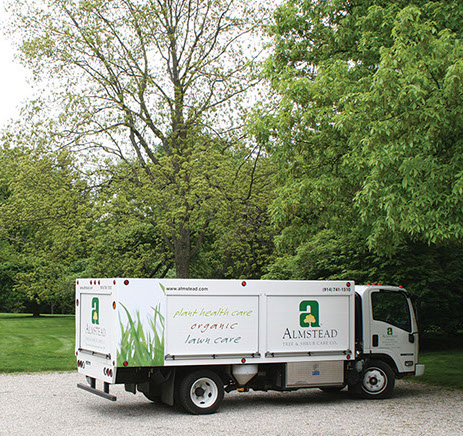Lawn Care
A Healthy Lawn Can Resist Pests And Diseases — Grubs Can Be Tough
The healthier your lawn, the more likely it is to resist pests and diseases.
- A good variety of turf species (some with natural resistance to insects and diseases; enriched with non-disease causing fungal endophytes) for the site conditions. These turf species are more drought tolerant, more competitive with weed species, able to recover more rapidly from injury and require lower inputs.
- Non-compacted soils that are biologically rich (compost/sand mix) and drain well.
- Properly irrigated (water for longer periods every other day or odd/even days rather than every day) with some seasonal adjustments as required.
- Cut at the right height (2.5 to 3.5”) especially in the summer; consider cutting every other week, July through August.
Some pests, however, can be hard to avoid and control—especially white grubs. Grubs are the larvae of beetles (primarily Japanese beetles and masked chafers) that develop in the ground. When the population of grubs is significant, you will start seeing gradual thinning and weakening of turf, followed by scattered, irregular dead patches, particularly towards late summer.
To make matters worse, grubs are a delicacy for some animals, such as skunks and raccoons. Sometimes the problem goes unnoticed until you see holes dug in your turf one morning. Grubs like sunny areas with moisture, and are not often found in the shade or in dry lawns.
If you see this type of damage in your turf, you should be able to easily lift up a piece of turf where the brown patch meets green lawn and inspect the upper 1-2” for the presence of grubs. Grubs are white and C-shaped. It only takes about 10 grubs per square foot of lawn to cause visible damage.
Two different strategies are available for controlling grubs: curative and preventive. Each approach has its own merits and limitations. Our technicians and arborists can discuss and recommend the best option for your lawn.
The best prevention for lawn disease and pests is maintaining the health of the lawn. A well-nourished and well-mown lawn with superior turf species becomes a self-sustaining system that is hostile to many predators; just keep a look out for grubs this summer season.



LOCATIONS:
Lower Westchester County, NY and New York City
58 Beechwood Ave, New Rochelle, NY 10801
914-576-0193
Upper Westchester (North of I-287)
15 Broadway, Hawthorne, NY 10532
914-741-1510
Fairfield County, Connecticut
80 Lincoln Avenue, Stamford CT 06902
203-348-4111
Bergen & Passaic Counties, NJ
504 High Mountain Road, North Haledon, NJ 07508
973-636-6711
Contact us for a Free Consultation



